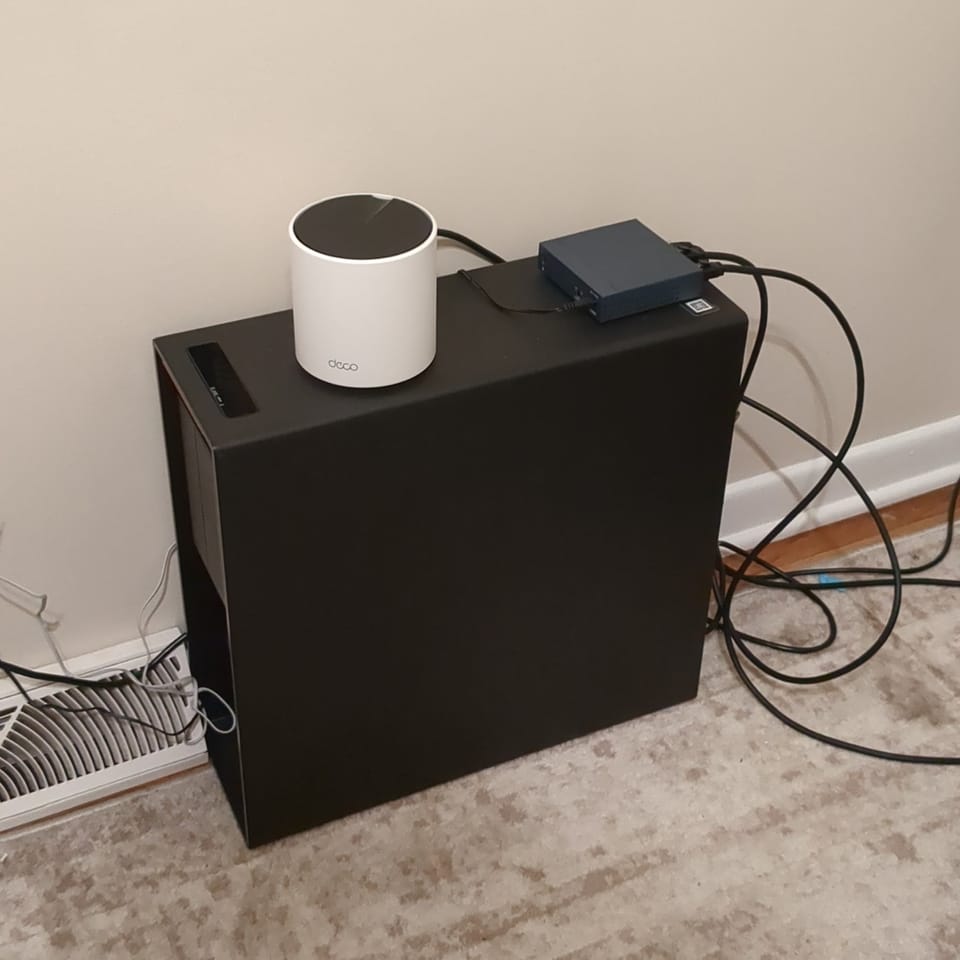Beginning of the rabbit hole of homelabbing

It all started with one basic goal: to break away from Big Tech surveillance. I was tired of Google and Apple constantly monitoring my every move—no more Gmail mining my emails, no more iCloud syncing my personal data, and no more relying on Apple's password managers. I wanted digital independence.
What began as research into alternatives to privacy rapidly led me to the fascinating realm of homelabbing. I had no idea I was about to embark on what could only be described as an infatuated affair—one that would absorb my leisure time while drastically lightening my wallet.
Like any good relationship, it started innocently enough. Maybe I'd just set up a simple Pi-hole to block ads. Perhaps run a basic file server. But before I knew it, I was deep into planning network topologies, researching enterprise hardware, and staying up until 2 AM troubleshooting Proxmox.
The homelab bug had bitten me hard. What began as a quest for privacy became an obsession with building the perfect home infrastructure. Every solved problem revealed three new projects.
Looking back, I should have realized that what I was entering into would allow me to govern my own data, understand business technology, and create something genuinely my own. What's the cost? Let's just say my pocketbook wishes I had stayed with Gmail.
I bought parts from several the internet retail outlets, including eBay, PC and Servers, and Amazon. I chose a Lenovo P520 workstation because it its strong expandability capabilities. My configuration consists of 64GB of RAM, an RTX 3080 graphics card, a 512GB NVMe SSD dedicated to virtual machines, and two 1TB hard drives—one for Nextcloud storage and another for gaming if necessary.
My current setup is built on TrueNAS, with Navidrome for music streaming, Nextcloud for cloud storage, and Jellyfin coming soon for media. As previously noted, I also use Pi-hole and Nginx Proxy Manager for SSL certificate management, which provides clean, uniform DNS with wildcard domain support to all of my devices. For security, I use Vaultwarden to manage passwords. On the virtualization front, I have a Windows VM for productivity work such as DaVinci Resolve, and I'm planning another VM for gaming—both of which use GPU passthrough for performance.
I'm planning future upgrades including additional storage for redundancy, and I want to build a custom VPN router using pfSense to gain more granular control over firewall rules and VPN functionality.
I'm quite pleased with this pastime and setup—the sense of freedom is liberating, knowing that I truly own my data and can turn off my server when it's not in use. I've even had friends ask me to build up network attached storage (NAS) systems for them. I also intend to upgrade my media servers with faster VPN connections and extend my content library.